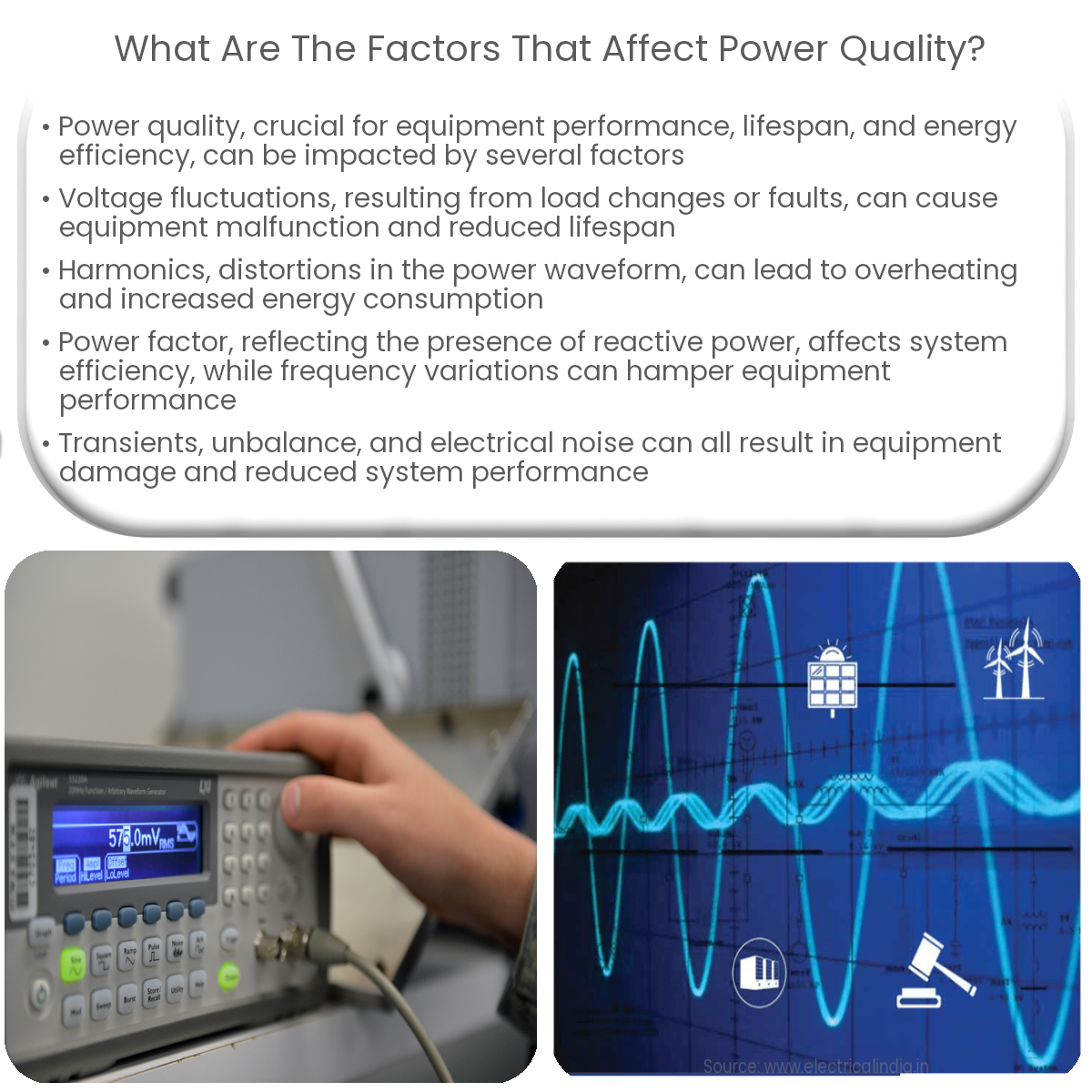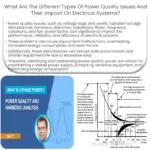Factors affecting power quality include voltage fluctuations, harmonics, power factor, frequency variations, transients, unbalance, and electrical noise.
Introduction
Power quality is a vital aspect of electrical systems, as it directly influences equipment performance, lifespan, and energy efficiency. Various factors can affect power quality, and understanding them is essential for maintaining optimal system operation. This article discusses the key factors that impact power quality.
1. Voltage fluctuations
Voltage fluctuations, such as sags, swells, or interruptions, can cause significant power quality issues. These fluctuations can result from load changes, faults in the power system, or switching operations. Voltage fluctuations can lead to equipment malfunction, reduced efficiency, and shortened lifespan.
2. Harmonics
Harmonics are distortions in the sinusoidal waveform of electrical power. They are caused by non-linear loads, such as electronic devices, variable frequency drives, and fluorescent lighting. Harmonics can result in overheating of transformers, motors, and cables, as well as increased energy consumption and reduced equipment lifespan.
3. Power factor
Power factor is the ratio of active power to apparent power in an electrical system. A low power factor indicates the presence of reactive power, which contributes to increased energy losses and reduced system efficiency. Factors that can affect power factor include inductive loads, such as motors and transformers, and capacitive loads, such as power factor correction capacitors.
4. Frequency variations
Frequency variations can result from imbalances between the generated power and load demand in the electrical grid. These variations can cause equipment malfunction, reduced performance, and increased energy consumption. Sensitive equipment, such as computer systems and communication networks, is particularly vulnerable to frequency variations.
5. Transients
Transients are short-lived, high-amplitude voltage or current surges that can cause significant power quality issues. They can result from lightning strikes, switching operations, or faults in the power system. Transients can lead to equipment damage, data loss, and reduced equipment lifespan.
6. Unbalance
Unbalance refers to the unequal distribution of voltage or current across the phases in a three-phase electrical system. Unbalance can be caused by unequal loads, faulty equipment, or poor system design. It can result in reduced equipment performance, increased energy consumption, and potential equipment damage.
7. Electrical noise
Electrical noise, also known as electromagnetic interference (EMI), can disrupt the operation of sensitive electronic devices and communication systems. Sources of electrical noise include power lines, motors, transformers, and electronic devices. EMI can cause data loss, equipment malfunction, and reduced system performance.
Conclusion
Several factors can affect power quality, such as voltage fluctuations, harmonics, power factor, frequency variations, transients, unbalance, and electrical noise. By understanding these factors and implementing appropriate measures to mitigate them, businesses can optimize their electrical systems and ensure reliable operation.




